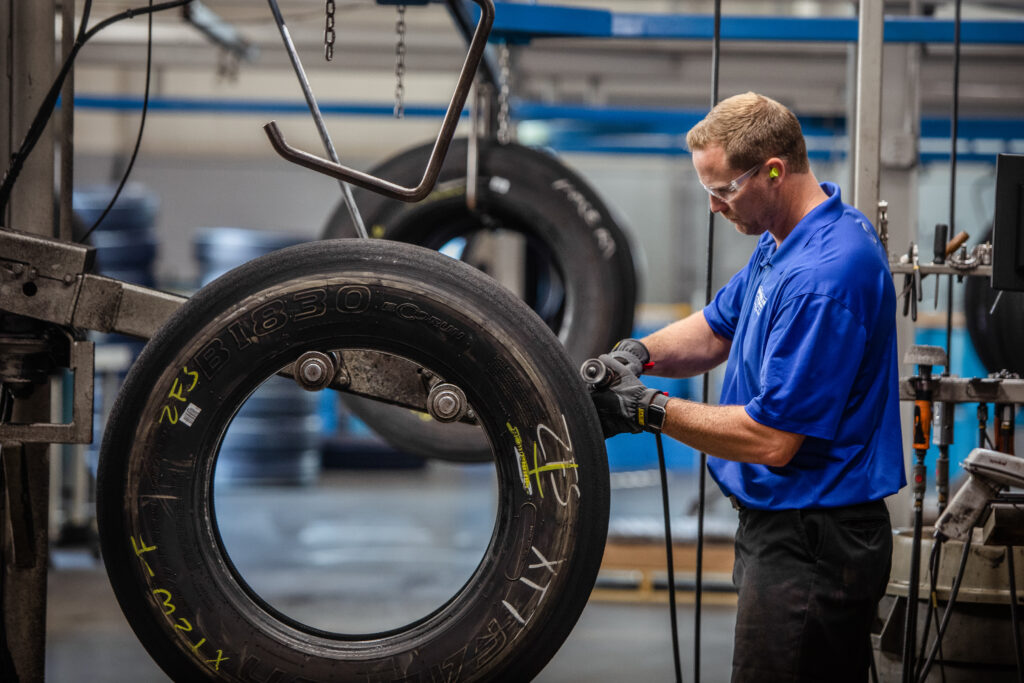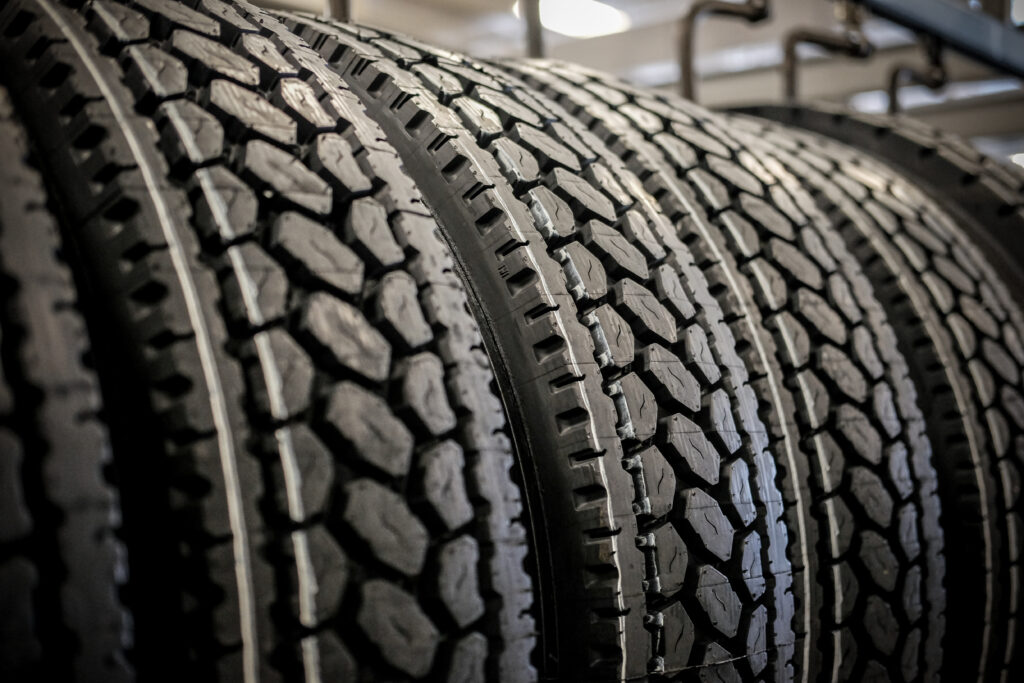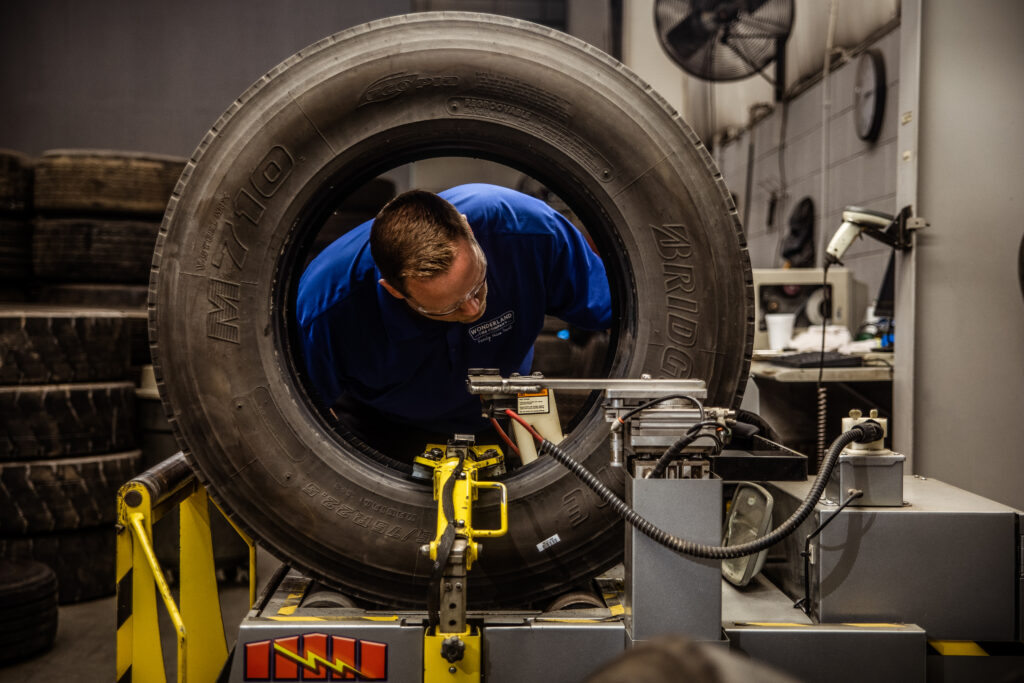Planning on Retreading? Learn How to Protect Your Current Tire Casings
Retreading is the best choice for fleet owners looking to significantly lower the lifecycle cost of their tires while still maintaining their initial investment. The retreading process aims to restore a large majority of fleet casings, making it a far more efficient, economical, and eco-friendly choice than new tires.
However, retreading is only a viable option as long as your fleet’s tire casings are in good condition. This guide will help you understand everything you need to know about preserving your fleet’s tire casings including:
• What Are Tire Casings?
• Why Does My Tire Casing Need to Be Protected?
• How Can I Protect My Tire Casings for Retreading?
• Where to Buy Retread Tires—The Acutread® Difference
What Are Tire Casings?
Tire casings are the body of the tire. They include components such as the bead, belt system, sidewall, body ply, and inner liner—almost everything but the tread. Tire casings are ultimately the foundation upon which the tread sets, supporting the structure of the tire.
Why Does My Tire Casing Need to Be Protected?
The retread process relies solely on the quality of your tire casing—it takes a quality casing to produce a quality remanufactured tire. And because today’s commercial truck tires are designed to be retreaded multiple times, protecting the investment of your tire casings is critical for your retreading efforts and your wallet.

How Can I Protect My Tire Casings for Retreading?
Proper maintenance is essential for extending the longevity of your tires. Maintaining proper inflation, completing regular tire rotations, and avoiding road hazards can all help ensure your tire casing remains at retreading quality.
What Automatically Disqualifies Your Tires for Retreading?
• Age – Usually once a tire reaches six years of active performance, it is considered unsafe to retread.
• Linear cracking or separation – Sunlight, water, and salt can all accelerate the degradation of tire rubber, causing cracks or separations over time that make retreading unsafe.
• Belt separation – Improper flat repair, manufacturing errors, improper driving behaviors, or overuse can all cause belt separation and prevent a tire from being retreadable.
• Excessive or large damages to the belt – Sharp objects and debris on the road can create damages to the belt that are either too big or too difficult to safely repair for retreading.
• Excessive or large injuries to the sidewall – Sharp objects and debris on the road can create damages to the sidewall that are either too big or too difficult to safely repair for retreading.
• Bead damage to the belt – Driving on over- or under-inflated tires, poor driving habits, and road hazards can cause bead damage, rendering the casing unsafe for retreading.
• Run flats – In heavier applications, run-flat tire casings would take quite a beating while the tire is deflated, and would likely be damaged beyond repair, making them unsuitable for retreading.
What Can I Do to Properly Maintain My Tire Casings?
Proper tire inflation
One of the best ways to maximize the retreadability and durability of your tire casings is to maintain proper tire inflation pressure.
Nothing damages a tire’s casing faster than improper tire inflation. Over-inflating wears out the center of the casing, while under-inflating wears on the tire’s shoulder and damages the casing’s structure.
Rotate your tires regularly
Periodical tire rotations help to even out tire wear, extending their lifespan and maintaining their integrity for future retreads.
Steer tires need to be rotated side-to-side, but drive tires can be rotated from the front axle to the rear axle, side-to-side across the axle, or crisscrossed!
Take care of your current tread
Clean your tread
Tires can run into anything on the road, including salt, chemicals, and debris like nails and glass. Premature tire wear is often caused by one of these hazards but frequently goes overlooked until your tire is removed.
Washing your tires anytime you wash your truck is a good way to combat those hazards along with regular damage inspections before and after each trip.
Drive carefully
Aggressive stopping, starting, turning, and speeding can produce excessive wear on your tires, along with other truck components. Making sure you are driving carefully and mindfully is another great way to combat premature tread wear.
Watch your treadwear
In order to preserve your tires for retreading, it’s necessary to stop using them when the remaining tread gets down to 4/32nds. Allowing the tread to get any lower than this will only increase the likelihood of casing damage, which also reduces the chances of retreading those tires.

Where to Buy Retread Tires—The Acutread® Difference
The AcuTread® remanufacturing process is a highly advanced retreading system, engineered second to none. It allows us to produce tires that are built expertly for safety, uniformity, reduced heat buildup, and longer tread life.
When you choose AcuTread, a trained inspection technician will look for specific tire conditions that either qualify or disqualify your casings for the possibility of retread. Your casing will be checked for micro-porosity and injuries. If detected, your casing will then be repaired using a 2-piece cured repair system.
Interested in retreading your tires with an AcuTread manufacturer? Find an AcuTread dealer near you.


